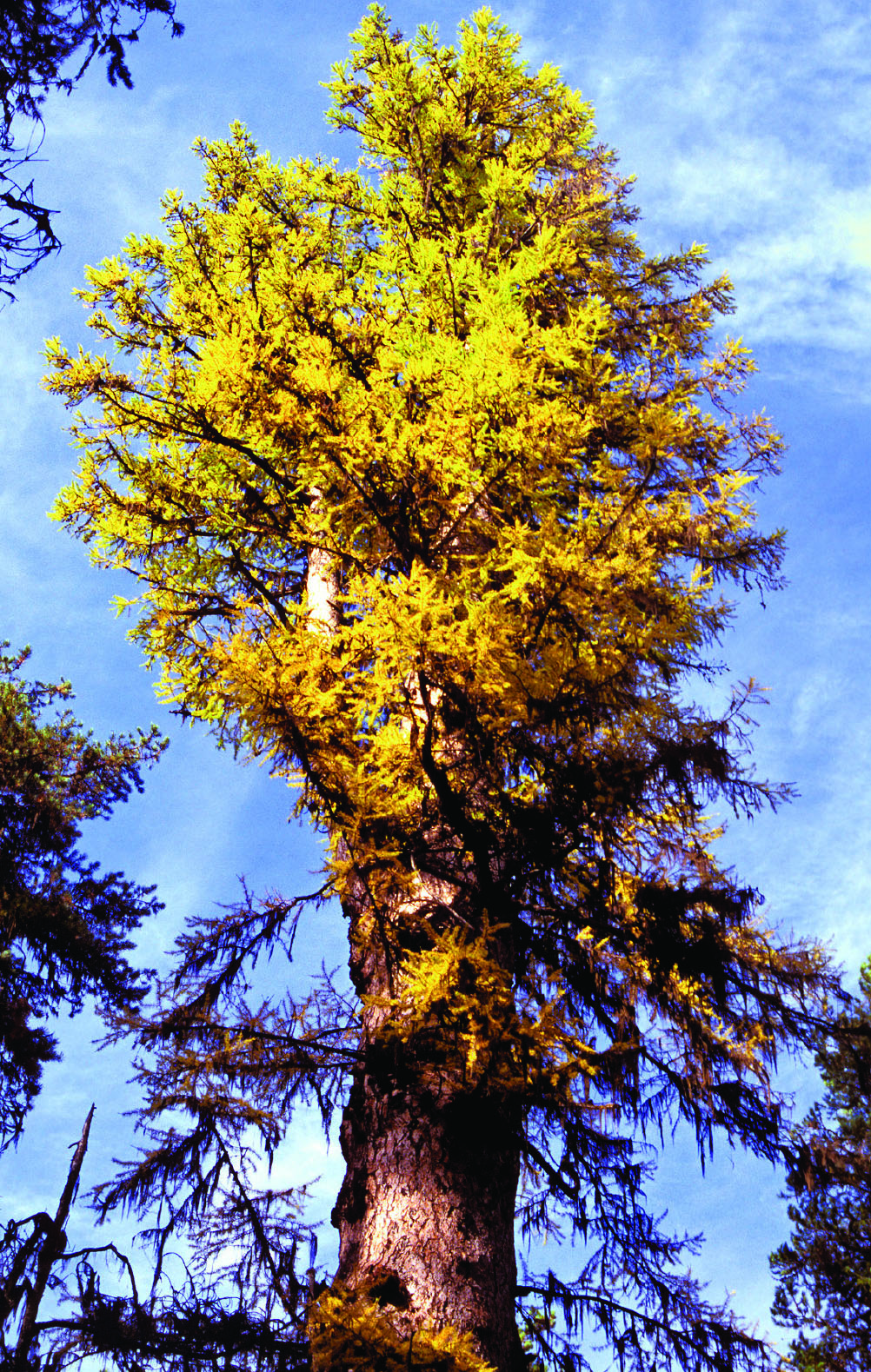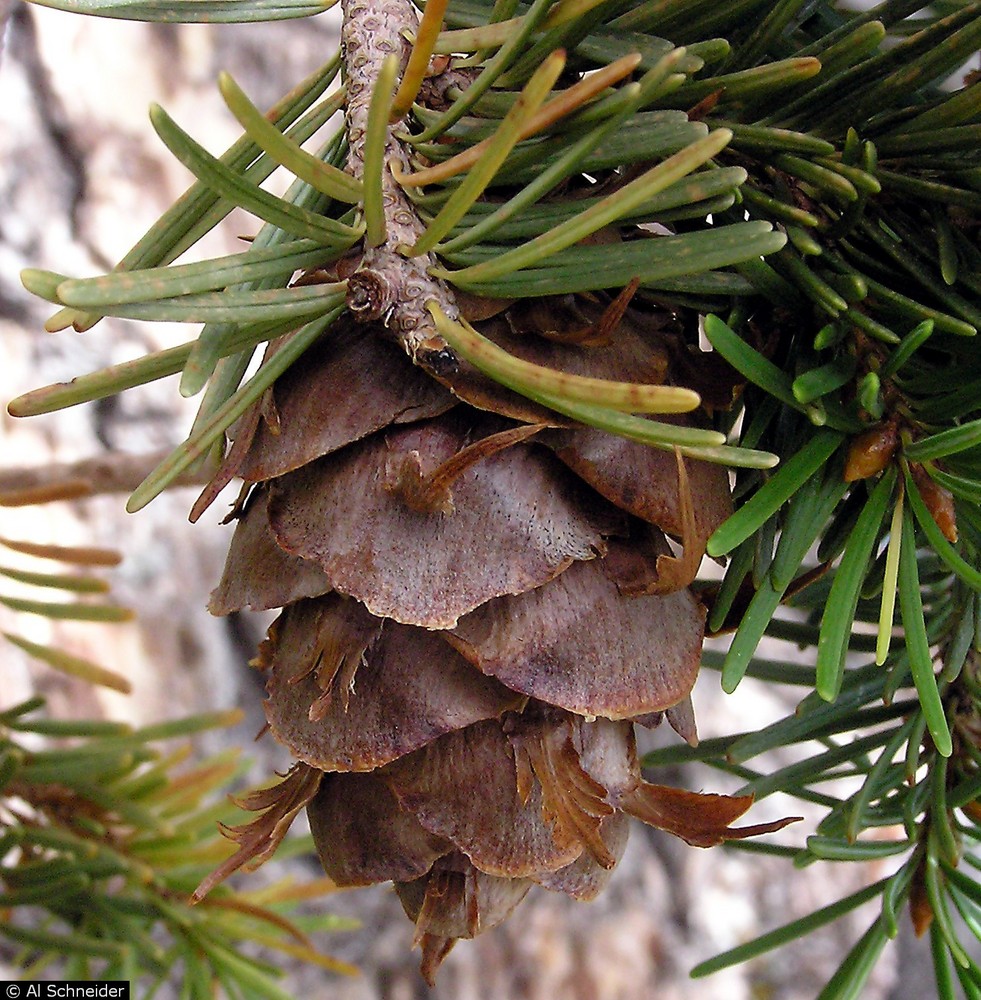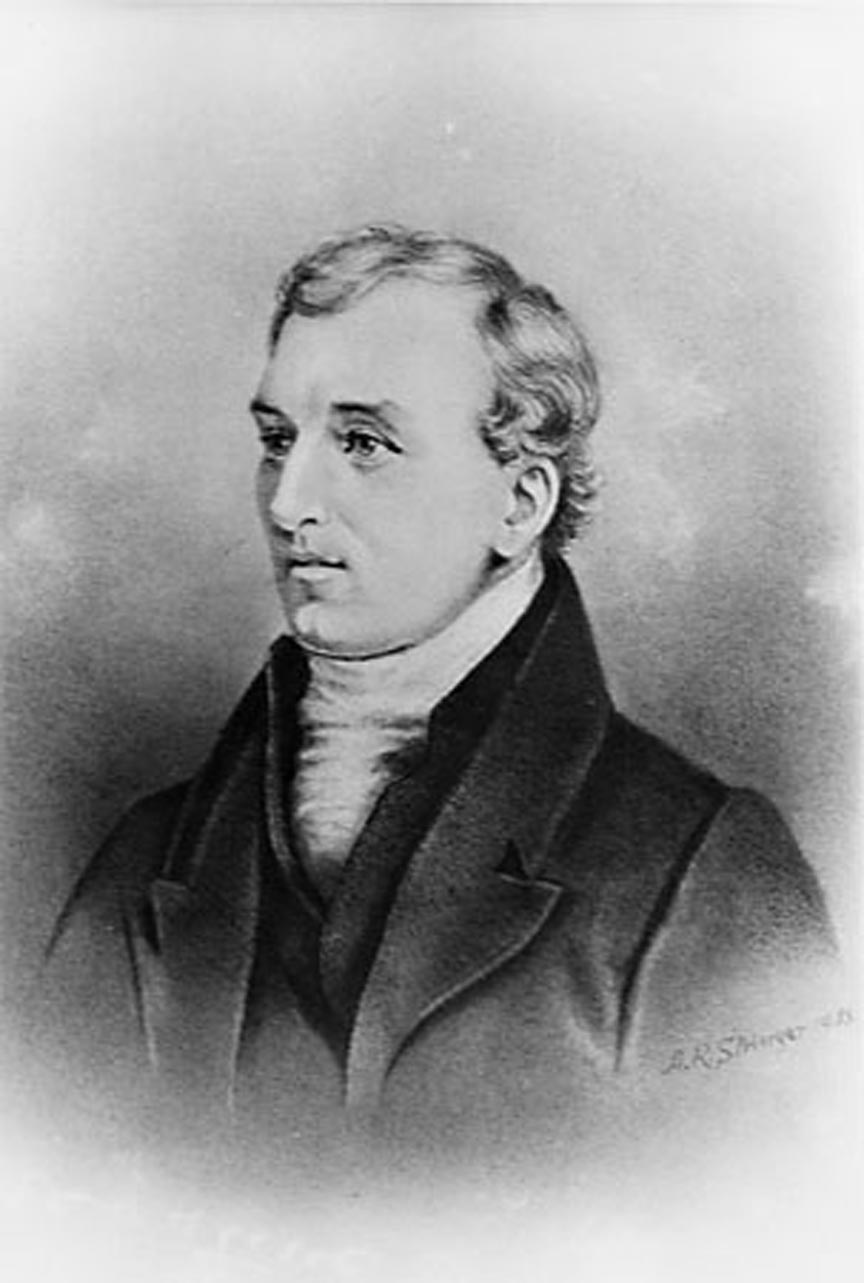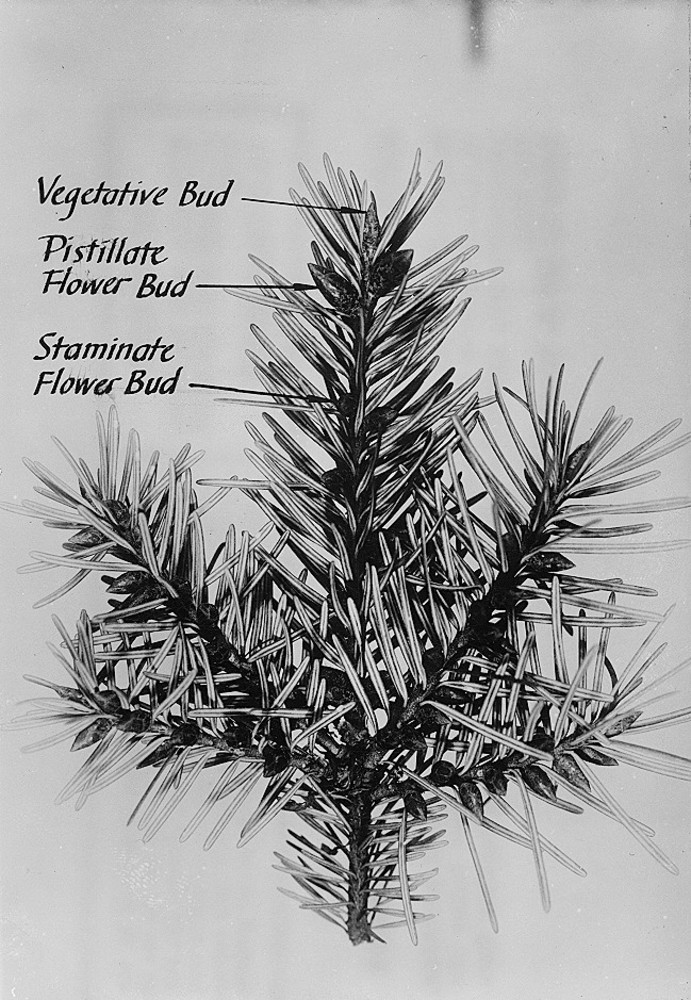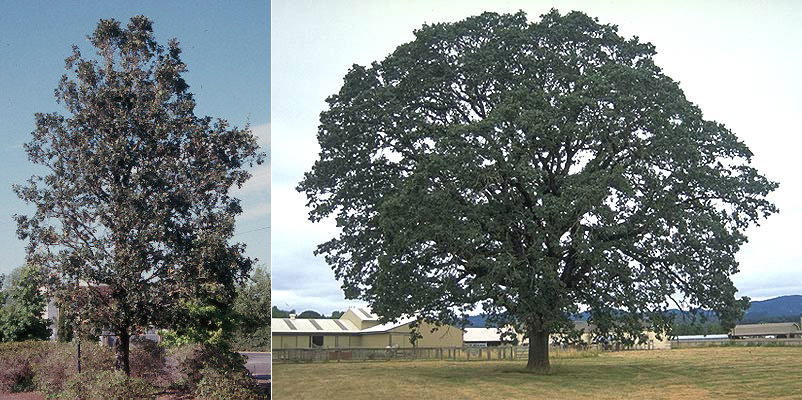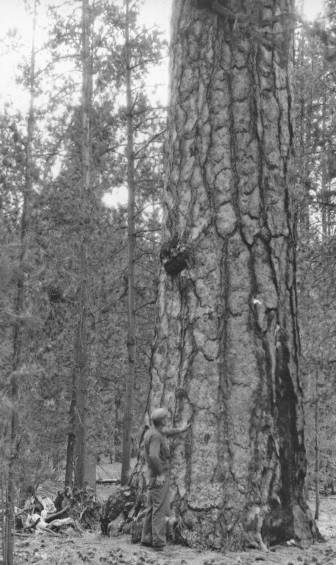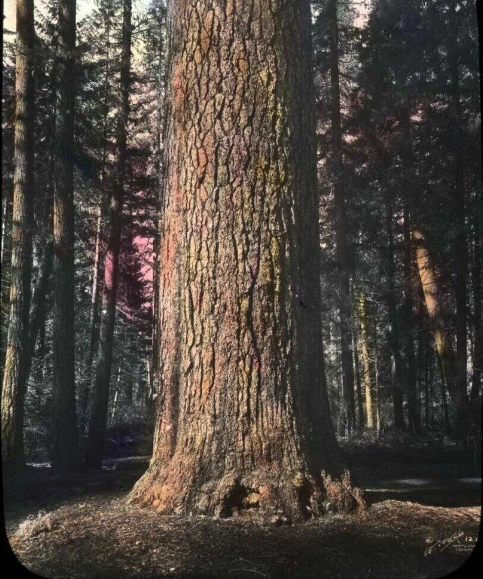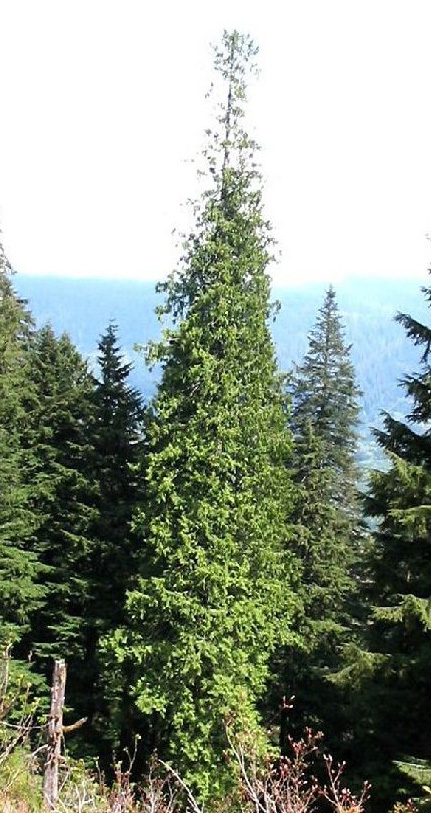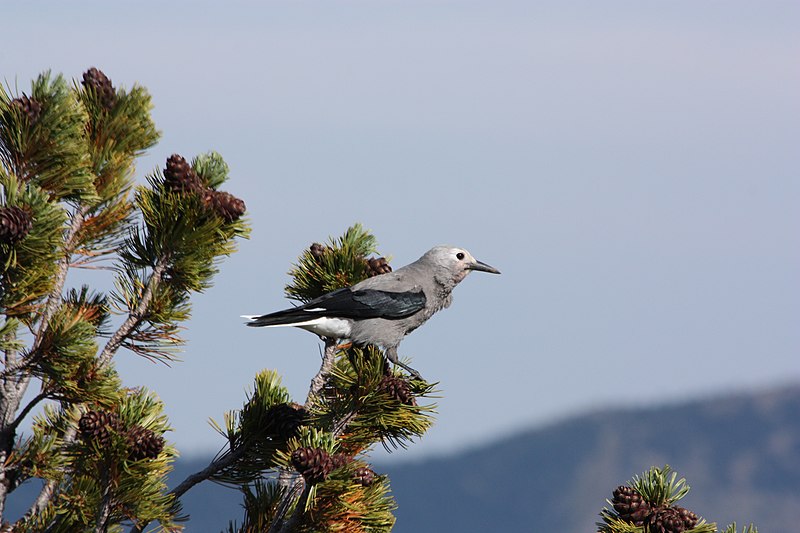Western Larch (Larix occidentalis) often goes unnoticed much of the year. In the fall, in mixed stands with other conifers or growing together, larches stand out when their needles turn a flaming golden yellow before dropping to the ground. The deciduous trees spend winters as ghosts of their former selves. They look dead. Then, in spring, they leap back to life as new needles form and the trees take on a bright green color.
Western larch is also called mountain larch, hackmatac, tamarack, or western tamarack. The Native American name hackmatac is seldom used, and tamarack should be reserved for Larix larcina of the northeastern United States and Canada. Western larch, observed by David Douglas and Meriwether Lewis and William Clark, were named by the venerable Thomas Nuttall who described the species in 1849 in The North American Sylva: or, A description of the forest trees of the United States, Canada, and Nova Scoti: "We met with this apparently-distinct species of Larch in the coves of the Rocky Mountains on the western slope toward the Oregon."
Larix may be from the Celtic lar, or fat, alluding to the abundance of resin in the trees. Occidentalis refers to the trees' distribution in the western United States.
Western larch is found in foothill and mid-mountain areas from the east slopes of the Cascade Mountains in Oregon and Washington, east to the Rocky Mountains of British Columbia and Alberta, south through Idaho and western Montana, and in the mountain ranges in northeastern Oregon. Southern Oregonians can see a few trees growing in a forest plantation on the west side of the Clover Creek road between Ashland and Keno.
Western larch grows under relatively moist conditions, often alongside lodgepole pine. It is a sun lover, with very thick, fire-resistant bark that allows it to tolerate and benefit from fire. Rapid growth allows the larch to out-compete more shade-tolerant competitors such as Douglas-fir.
The Oregon Champion western larch is in Eagle Cap Wilderness in the Wallowa Mountains. It is 7 feet in diameter and 103 feet tall. The National Champion is found on the Lolo National Forest in Montana. It is a little over 7 feet in diameter and 162 feet tall. Big trees may live for a thousand years.
Native American use of western larch for food and drugs has a chemical basis. The trees contain polysaccharide arabinogalactan, a substance approved by the Federal Drug Administration as a food additive. Native Americans chewed the resinous exudate as a candy and made various decoctions of needles and branches to treat ailments from colds and arthritis to cancer. A decoction was also used as a wash or bath to make babies strong and as a form of birth control. Today, arabinogalactan is used as an emulsifier, stabilizer, binder, or bodying agent in food, ink, and paint and as a modern remedy for many of the ailments treated by Native Americans.
Western larch is known for its hard, heavy wood that resists decay. The wood has been used for railroad ties, mine timbers, boat construction, telephone poles, pulp for paper, and veneer, and in construction where strong timbers are required.
-
![]()
Western Larch.
Courtesy Washington State Dept. of Natural Resources -
![]()
Western Larch.
Courtesy Washington State Dept. of Natural Resources
Related Entries
-
![Conifers]()
Conifers
Conifers (cone-bearing trees) are the major plant group in Oregon in te…
-
![David Douglas (1799-1834)]()
David Douglas (1799-1834)
David Douglas is one of the best-known botanists in Oregon history, pri…
-
![Douglas-fir]()
Douglas-fir
Douglas-fir (Pseudotsuga menziesii), perhaps the most common tree in Or…
-
![Lodgepole pine]()
Lodgepole pine
Oregon's only native two-needle pine, Pinus contorta, commonly called l…
-
![Oregon white oak]()
Oregon white oak
Oregon white oak, Quercus garryana, grows along the Pacific Coast from …
-
![Pacific madrone]()
Pacific madrone
On May 2, 1792, Archibald Menzies, a surgeon and naturalist on the Geor…
-
![Ponderosa pine]()
Ponderosa pine
Ponderosa pine (Pinus ponderosa)—also known as yellow, western yellow, …
-
![Sugar pine]()
Sugar pine
Sugar pine (Pinus lambertiana) is one of the great conifers of the west…
-
![Thomas Nuttall (1786-1859)]()
Thomas Nuttall (1786-1859)
Thomas Nuttall was one of the most enthusiastic and energetic of the ea…
-
![Western red cedar]()
Western red cedar
Western red cedar (Thuja plicata) is one of the grand trees that grows …
-
Whitebark pine
Whitebark pine (Pinus albicaulis) is arguably Oregon's quintessential t…
Related Historical Records
Map This on the Oregon History WayFinder
The Oregon History Wayfinder is an interactive map that identifies significant places, people, and events in Oregon history.
Further Reading
Arno, S. F., and R. P. Hammerly. Northwest Trees: identifying and understanding our native trees (rev. ed.). Seattle: Mountaineers, 2007.
Moerman, D. E. Native American Ethnobotany. Portland, Oreg.: Timber Press, 1998, p. 927.



